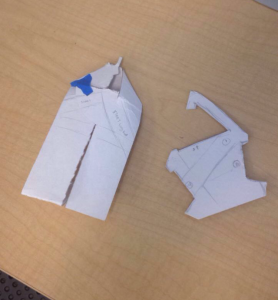For this week, we delved into the last stretch of the course: our Final Project. Each group some sort of solution to a problem of their choosing; big or small. The issue or solution does not necessarily have to be 3D printing-related, but simply portray the aspects of design and making that we have learned over the course of the semester. Although, most of the final projects do include 3D printed models to some degree. This week, we began the first stage(s) of our projects.
My team and I, the MakerLAX, decided aimed to resolve an issue that was felt by many college students and other young adults: tying ties. As one gets older, they will have to attend more and more formal events and gatherings, and as such will require more formal dress. The tie is an integral part of formal attire, but is notoriously difficult to prepare for the first time, as well as long after. It may seem like relatively simple task, but getting accustomed to tying a tie as well as all the different knots that once can choose from takes time. This combined with the fact that most young adults only really have to wear ties from time-to-time and not on a daily basis, makes learning the ins and outs of tying one somewhat difficult. I personally require assistance from someone who already has gone through the whole process of learning how to tie a tie, or watching an online tutorial whenever I find myself needing a tie. While this may not be an inherently big problem, it can certainly be helped.
The premise behind our solution is to create a sort of “tie-helper”, as in, an object about the size of a small paperweight that can act as a guide for a person to use to tie their tie. We have found remnants of what appear to be previous attempts at creating such a product, but they were either flawed or never really reached production. https://www.youtube.com/watch?v=D3tkWcp3wK4 Our group is aiming to create a design that can be mass-produced or even printed at home. The idea as it stands so far is to print a model that is inscribed with numbers and/or pictures of instructions on how to tie a specific knot that has yet to be chosen. After finishing the knot, the object can be easily separated from the tie and the tie will already be tied around the neck. In class, we presented our idea to the rest of the groups and were given feedback. We also created some crude models of possible designs, which could be considered our initial prototypes. From here, we will be creating and testing new models to perfect for our final iteration. We’ve all learned a lot these past few months in Digital Making; I am really looking forward to putting it to good use, as well as seeing what everyone else comes up with.
 Paper Prototypes
Paper Prototypes

